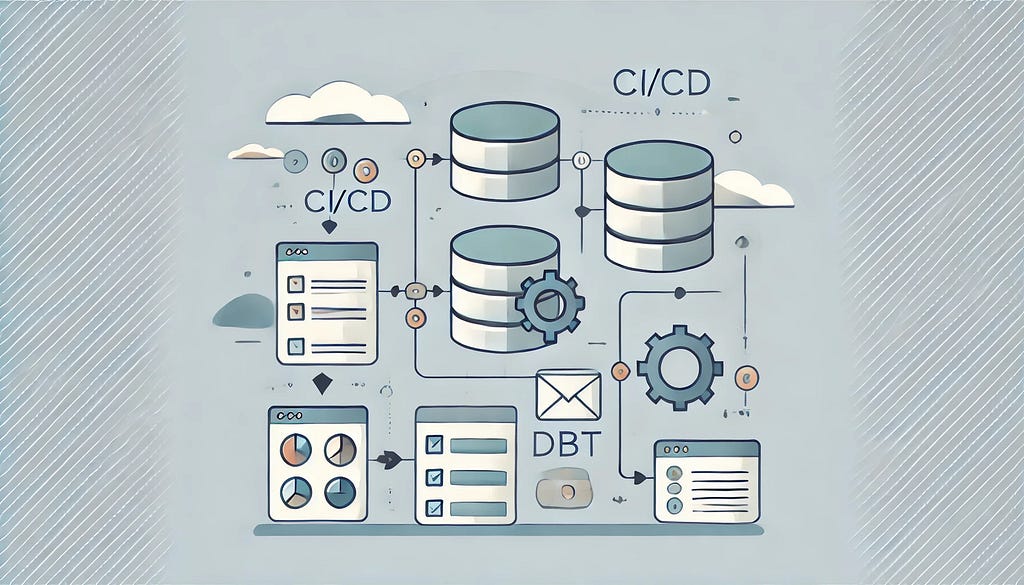How to Learn Coding from Scratch: A Beginner’s Guide
Have you ever dreamed of building your own website, developing an app, or simply understanding how computers work? Learning to code is one of the most valuable skills in today’s digital world. The best part? You don’t need a degree or prior experience to get started. With the right approach, anyone can learn coding from scratch! In this guide, we’ll take you through a step-by-step process to start coding effectively. Whether you want to become a web developer, data scientist, or software engineer, this guide will set you on the right path. How to Learn Coding from Scratch Step 1: Understand Why You Want to Learn Coding Before you dive in, ask yourself: Why do I want to learn coding? Are you interested in web development, game development, or app development? Do you want to automate tasks or analyze data? Are you learning for fun, a career change, or a freelance opportunity? Your goal will determine the best programming language and learning path for you. For example, web developers often start with HTML, CSS, and JavaScript, while data scientists focus on Python and SQL. Step 2: Choose the Right Programming Language There are many programming languages, but as a beginner, it's best to start with an easy and versatile one. Here are some great options: Python – Ideal for beginners due to its simple syntax. Used in web development, data science, and automation. JavaScript– Essential for front-end web development and interactive websites. HTML & CSS – Fundamental for web design and structure. Scratch – A visual programming language perfect for kids and absolute beginners. C/C++ – Good for understanding low-level programming concepts. Choose a language based on your interests and long-term goals. Step 3: Start with Free Online Resources You don’t need to spend money to learn coding. There are many free resources available: Codecademy– Interactive lessons for various languages. freeCodeCamp– Hands-on projects and certifications. CS50 by Harvard (on edX) – A comprehensive introduction to computer science. Khan Academy – Basics of programming and computer science. W3Schools– Great for learning web development (HTML, CSS, JavaScript). Pick one and stick with it for consistency! Step 4: Learn by Doing – Practice, Practice, Practice! Coding is like learning a new language; you need hands-on practice. Here’s how you can do it: Write Code Every Day– Even 30 minutes a day will help you retain concepts. Work on Small Projects – Start with simple projects like a to-do list or a calculator. Use Online Coding Platforms – Try LeetCode, CodeWars, or HackerRank to improve your problem-solving skills. Join Open Source Projects – Contribute to projects on GitHub to gain real-world experience. Step 5: Build Real-World Projects Once you're comfortable with basic concepts, start building projects. Here are some beginner-friendly project ideas: A personal portfolio website A simple weather app using API A calculator or unit converter A basic to-do list application A quiz game Projects help you apply what you've learned and create a portfolio to showcase your skills to potential employers. Step 6: Join a Coding Community Learning alone can be challenging, so join coding communities to stay motivated: Stack Overflow – Ask coding questions and get answers from experts. GitHub – Share your projects and collaborate with other developers. Reddit (r/learnprogramming) – A great place for coding discussions. Discord & Slack groups – Many coding communities have chat groups for real-time discussions. Engaging with a community helps you solve problems faster and stay inspired. Step 7: Never Stop Learning & Keep Challenging Yourself Technology evolves quickly, and coding is a lifelong learning process. Here’s how to stay ahead: Read Blogs & Follow Industry Leaders – Websites like Medium, Dev.to, and Smashing Magazine offer valuable insights. Watch YouTube Tutorials – Channels like Traversy Media, The Net Ninja, and Programming with Mosh are excellent. Enroll in Advanced Courses – Platforms like Udemy and Coursera offer specialized coding courses. Experiment with New Technologies – Try AI, blockchain, or game development to expand your skill set. Conclusion Learning to code from scratch may seem daunting at first, but with the right mindset and resources, anyone can do it. Start with a clear goal, choose a beginner-friendly language, practice consistently, and build projects. Remember, coding is not just about writing code—it’s about solving problems and thinking logically. So, what are you waiting for? Take the first step today, and soon, you'll be creating your own websites, apps, and software. Happy coding!

Have you ever dreamed of building your own website, developing an app, or simply understanding how computers work? Learning to code is one of the most valuable skills in today’s digital world. The best part? You don’t need a degree or prior experience to get started. With the right approach, anyone can learn coding from scratch!
In this guide, we’ll take you through a step-by-step process to start coding effectively. Whether you want to become a web developer, data scientist, or software engineer, this guide will set you on the right path.
How to Learn Coding from Scratch
Step 1: Understand Why You Want to Learn Coding
Before you dive in, ask yourself: Why do I want to learn coding?
- Are you interested in web development, game development, or app development?
- Do you want to automate tasks or analyze data?
- Are you learning for fun, a career change, or a freelance opportunity?
Your goal will determine the best programming language and learning path for you. For example, web developers often start with HTML, CSS, and JavaScript, while data scientists focus on Python and SQL.
Step 2: Choose the Right Programming Language
There are many programming languages, but as a beginner, it's best to start with an easy and versatile one. Here are some great options:
Python – Ideal for beginners due to its simple syntax. Used in web development, data science, and automation.
JavaScript– Essential for front-end web development and interactive websites.
HTML & CSS – Fundamental for web design and structure.
Scratch – A visual programming language perfect for kids and absolute beginners.
C/C++ – Good for understanding low-level programming concepts.
Choose a language based on your interests and long-term goals.
Step 3: Start with Free Online Resources
You don’t need to spend money to learn coding. There are many free resources available:
Codecademy– Interactive lessons for various languages.
freeCodeCamp– Hands-on projects and certifications.
CS50 by Harvard (on edX) – A comprehensive introduction to computer science.
Khan Academy – Basics of programming and computer science.
W3Schools– Great for learning web development (HTML, CSS, JavaScript).
Pick one and stick with it for consistency!
Step 4: Learn by Doing – Practice, Practice, Practice!
Coding is like learning a new language; you need hands-on practice. Here’s how you can do it:
Write Code Every Day– Even 30 minutes a day will help you retain concepts.
Work on Small Projects – Start with simple projects like a to-do list or a calculator.
Use Online Coding Platforms – Try LeetCode, CodeWars, or HackerRank to improve your problem-solving skills.
Join Open Source Projects – Contribute to projects on GitHub to gain real-world experience.
Step 5: Build Real-World Projects
Once you're comfortable with basic concepts, start building projects. Here are some beginner-friendly project ideas:
- A personal portfolio website
- A simple weather app using API
- A calculator or unit converter
- A basic to-do list application
- A quiz game
Projects help you apply what you've learned and create a portfolio to showcase your skills to potential employers.
Step 6: Join a Coding Community
Learning alone can be challenging, so join coding communities to stay motivated:
Stack Overflow – Ask coding questions and get answers from experts.
GitHub – Share your projects and collaborate with other developers.
Reddit (r/learnprogramming) – A great place for coding discussions.
Discord & Slack groups – Many coding communities have chat groups for real-time discussions.
Engaging with a community helps you solve problems faster and stay inspired.
Step 7: Never Stop Learning & Keep Challenging Yourself
Technology evolves quickly, and coding is a lifelong learning process. Here’s how to stay ahead:
Read Blogs & Follow Industry Leaders – Websites like Medium, Dev.to, and Smashing Magazine offer valuable insights.
Watch YouTube Tutorials – Channels like Traversy Media, The Net Ninja, and Programming with Mosh are excellent.
Enroll in Advanced Courses – Platforms like Udemy and Coursera offer specialized coding courses.
Experiment with New Technologies – Try AI, blockchain, or game development to expand your skill set.
Conclusion
Learning to code from scratch may seem daunting at first, but with the right mindset and resources, anyone can do it. Start with a clear goal, choose a beginner-friendly language, practice consistently, and build projects. Remember, coding is not just about writing code—it’s about solving problems and thinking logically.
So, what are you waiting for? Take the first step today, and soon, you'll be creating your own websites, apps, and software. Happy coding!
What's Your Reaction?




























